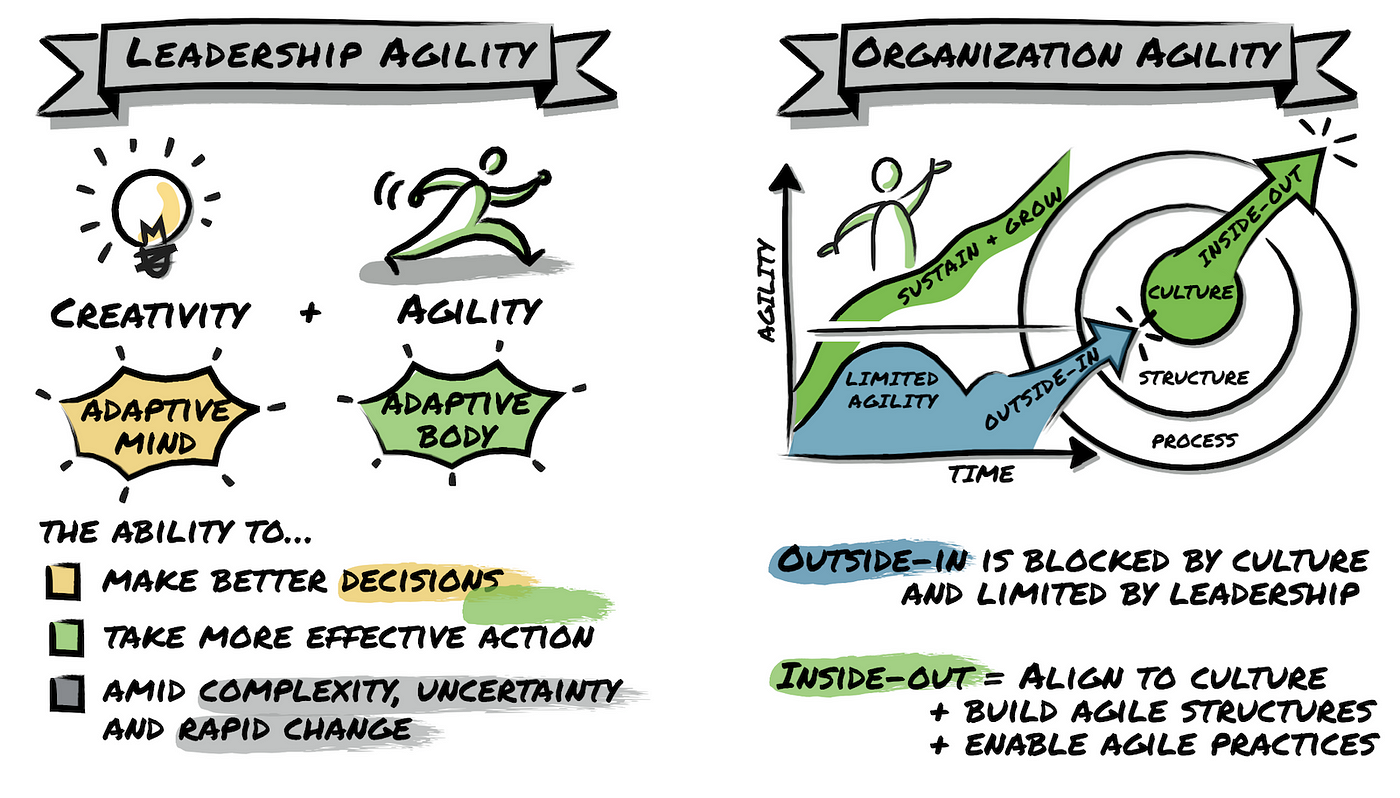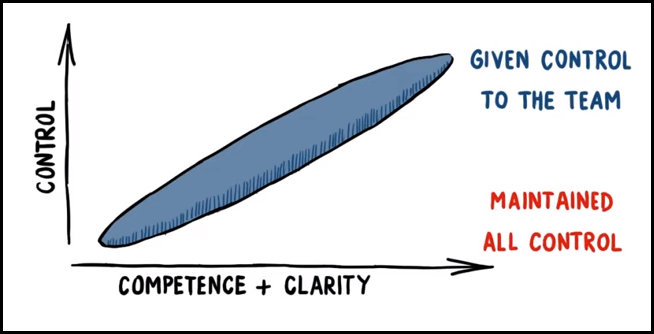Organization Leadership Enabling: Empowerment in the Workplace
By Team Lean Agile Intelligence

Empowerment In The Workplace
In today’s fast-paced business world—especially with the rise of Generative AI (GenAI)—organizations must be both agile and adaptive to thrive. Empowering leaders to enable their teams is a critical foundation for any successful GenAI strategy, particularly when aiming to scale across the enterprise.
Empowerment becomes even more essential in the age of GenAI. As businesses begin to adopt and scale GenAI, leadership must evolve to foster an environment where experimentation, ethical risk-taking, and continuous feedback thrive. These are core enablers of GenAI capabilities like intelligent orchestration, human-in-the-loop refinement, and decentralized AI governance.
Organization Leadership Enabling is empowerment in the workplace. In this post, we discuss the best practices of Organization Leadership Enabling. Following the foundational techniques at different stages of your learning journey, you can ensure to learn about the best strategies to bring back to the team. However, Organization Leadership Enabling is just one part of the big picture, if you want a holistic view of your organization's current process status, take advantage of our free agile assessment for Organization Business Agility.
Organization Leadership Enabling and The Learning Journey
The organization's ability to enable their people to do their best work, or empowerment in the workplace. At Lean Agile Intelligence, we refer to this process as Organization Leadership Enabling. Our learning journey consists of four stages - Developing, Emerging, Adapting, and Optimizing - and in this post, we will delve into each of these stages, offering practical insights and strategies to help you improve your skills in this area.

Source - Agile Leadership
Developing
Leaders “developing” an understanding of the value of the Organization Leadership Enabling practice and adopting the foundational techniques should focus on the following improvements:
-
The What: Organization leaders have feedback mechanisms in place to get input from the people doing the work on processes and tools
-
The How: A critical aspect of decentralized decision-making is the ability to receive immediate and frequent feedback from the people on the decisions that have been decentralized. It’s recommended to formalize a process of real-time feedback and schedule events on a cadence where feedback can be given and received.
-
-
The What: Organization leaders focus on removing impediments and eliminating waste
-
The How: Organization leaders can add value to the entire organization by helping to remove impediments and eliminate dependencies. Organizational leaders can only solve many impediments that surface at the team and multi-team levels. Lead Facilitators should escalate issues to organizational leaders while still owning the impediment to ensure it is resolved.
-
-
The What: Organization leaders powerfully and inspiringly communicate the mission and purpose of the organization
- In a GenAI-enabled organization, this communication extends to the responsible use of AI. Leaders must articulate how AI initiatives align with organizational purpose and customer value—especially as GenAI becomes part of daily workflows.
-
The How: This post by Amplitude describes the concept of a “North Star Metric,” which is an aligning force inside an organization that represents a vision and strategy. This technique can help organization leaders align people, especially in a decentralized decision-making environment

Emerging
Leaders “emerging” beyond the foundational techniques of the Organization Leadership Enabling practice and embracing it as they become more proficient should focus on the following improvements:
-
The What: Organization leaders ensure team members have everything (i.e., training, tools, domain knowledge, etc.) they need to be successful
-
The How: Teams and Multi-teams understand what they need to be successful by establishing coaching and cross-functionality development plans. Often leadership in an organization controls the budgets for training, tooling, conferences, etc. Organizational leaders must work closely with lead facilitators to understand where they can help.
-
-
The What: Organization leaders help create a workspace that elicits collaboration, knowledge sharing, and free flow of information
-
The How: Agile leadership starts with the first value of agile, “Individuals and interactions over processes and tools.” by designing an environment where teams can effectively learn, experiment, and collaborate. We have put together a blog post to help with tools for remote collaboration here.
-
* * * * * *
"Organization leaders can add value to the entire organization by helping to remove impediments and eliminate dependencies."
* * * * * *
Adapting
Leaders “adapting” the Organization Leadership Enabling practice to extract the full benefit should focus on the following improvements:
-
The What: Organization leaders create transparency and visibility about the work going on within the organization and its progress
-
The How: The first step to transparency is to visualize all work in progress, potential new ideas (when appropriate), and results from previous releases. This can be done via kanban boards (discovery, portfolio, program, etc.) and metrics such as the WIP run Chart. For more information on discovery kanban, see this blog post by Jeff Zych from Optimizely.
-
-
The What: Organization leaders introduce new competencies that enable teams
-
With GenAI, the introduction of new competencies is not optional—it’s essential. Leaders must guide their teams through the learning curve of using generative ai for business applications, including understanding model limitations, ensuring compliance, and using GenAI tools to support innovation. As part of your enterprise ai adoption, evaluating leadership readiness to support this evolution is critical.
-
The How: David Marquet talks about the three C’s of leadership in his book “Turn the ship around.” They are control, competence, and clarity. The idea is that leadership competency is measured and transparent across the organization. Depending on the level of measurable competence, more control can be given. Below is a visualization of the framework. For more details, check out this blog post by Geoff Mazeroff on the topic and the book by David Marquet.
-

Source - Framework #2: Leaders Tune Control to Competence and Clarity (Leadership Nudge #278)
Optimizing
Leaders “optimizing” the knowledge sharing of the Organization Leadership Enabling practice learnings across the enterprise should focus on the following improvements:
-
The What: Organization leaders implement measures that track the impact of a market deliverable
-
The How: One leadership technique we recommend is helping to formulate key OKRs which connect strategy to execution based on product performance. It’s not enough to create OKRs, but for them to be valuable, everyone involved in executing the OKRs needs to understand how their daily work aligns with OKRs. One tip for accomplishing this is to tie the success criteria of features and stories back up to the OKRs and regularly review OKR performance with everyone involved. More info about OKRs can be found here.
- Tracking impact becomes even more nuanced when integrating GenAI into business operations. It’s important that leaders include generative ai impact on business as a metric in their OKRs—connecting AI-driven initiatives to measurable business outcomes, customer experience gains, and internal productivity improvements.
-
* * * * * *
"The first step to transparency is to visualize all work in progress, potential new ideas (when appropriate), and results from previous releases."
* * * * * *
Conclusion
As organizations accelerate their GenAI adoption, strong leadership becomes the catalyst for success. Empowered leaders drive the clarity, confidence, and culture needed to build and scale GenAI capabilities. Use Lean Agile Intelligence’s assessments to measure where your leadership stands today—and where it needs to go to win with AI.
In conclusion, Organization Leadership Enabling is a crucial aspect of any organization that wants to enable its people to do their best work. From feedback mechanisms and removing impediments to creating transparency and introducing new competencies, there are numerous ways to strengthen your organization's skills in this area. By implementing these practical tips and techniques, leaders can optimize their knowledge sharing and track the impact of market deliverables, ultimately leading to greater success and growth for the entire organization. For a thorough assessment of your organization's current process status, we offer a free agile assessment for Organization Business Agility that you can take advantage of.